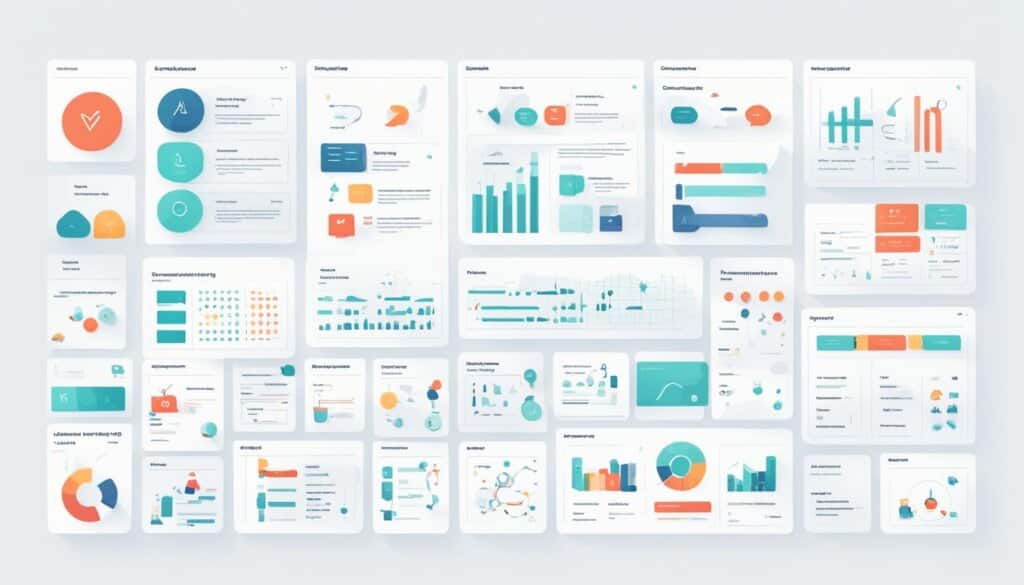Table of Contents
User experience (UX) design is the process of designing products that are useful, easy to use, and a pleasure to engage with. UX research is an essential step in the UX design process, as it helps designers understand users’ needs, motivations, and behaviors. UX research can be quantitative or qualitative, and it involves various methods such as surveys, interviews, and usability testing. The goal of UX research is to create a product that is relevant, easy to use, and provides a positive user experience.
The Importance of UX Research in Design
UX research is often misunderstood or overlooked in the design process, but it is a crucial step in creating successful designs. It helps inform design decisions by providing insights into user needs and preferences. By conducting user research, designers can understand the real-world context in which their designs will be used and make informed decisions based on user feedback. UX research ensures that designs are relevant, usable, and enjoyable for users, leading to higher satisfaction and better overall user experience.
The Importance of UX Research in Design
UX research plays a vital role in the design process, yet it is often underestimated or overlooked. Designers may be tempted to make assumptions about user needs and preferences, or simply rely on their own intuition when making design decisions. However, without conducting proper user research, their designs may miss the mark in terms of user experience.
By investing time and effort into user research, designers gain valuable insights into the real-world context in which their designs will be used. This understanding allows them to make informed decisions that align with user needs and preferences, resulting in designs that are not only visually appealing but also relevant and usable.
“Good design is making something intelligible and memorable. Great design is making something memorable and meaningful.” – Dieter Rams
User research provides designers with the opportunity to gather feedback and uncover pain points that users might face. This feedback is crucial for improving designs and creating a positive user experience. By conducting user interviews and usability tests, designers can identify usability issues, bottlenecks, and areas for improvement. This iterative process ensures that design decisions are grounded in data and user insights, rather than assumptions or guesswork.
Moreover, UX research helps designers gain a deeper understanding of their target users. By employing various research methods such as surveys, user interviews, and field studies, designers can uncover user motivations, behaviors, and pain points. This user-centric approach enables designers to create designs that resonate with their audience, leading to higher user satisfaction and better overall user experience.
Ultimately, UX research is an investment that pays off. By incorporating user research into the design process, designers can create products that users truly enjoy and find value in. This not only enhances the user experience but also positively impacts business goals and objectives.
Types of UX Research Methods
When conducting UX research, designers have a range of methods at their disposal to gain valuable insights into user experiences. There are two main types of UX research: qualitative research and quantitative research.
Qualitative research focuses on capturing subjective insights into users’ experiences, motivations, and behaviors. It involves gathering rich, in-depth data through methods such as user interviews and field studies.
Quantitative research, on the other hand, involves collecting and analyzing numerical data to identify patterns and trends. This type of research provides statistical evidence and is often conducted through methods such as surveys and usability testing.
Let’s take a closer look at some common UX research methods:
User Interviews
User interviews are a qualitative research method that allows designers to gather in-depth insights from users. By conducting interviews, designers can understand users’ needs, preferences, and pain points. These conversations provide valuable qualitative data that helps shape the design process.
Usability Testing
Usability testing is a quantitative research method that evaluates the effectiveness of a design. Through usability testing, designers observe users as they interact with a product or prototype and identify usability issues. This method provides actionable insights into how to improve the user experience.
Surveys
Surveys are a versatile research method that can be used for both qualitative and quantitative data collection. By distributing surveys, designers can gather data on user preferences, attitudes, and behaviors. Surveys provide valuable insights at scale and allow designers to understand user opinions on specific aspects of a product or service.
Field Studies
Field studies involve observing users in their natural environment, allowing designers to gain context and real-life insights into user behavior. This qualitative research method provides a deeper understanding of how users interact with products or services in real-world situations. Field studies often complement other research methods and help designers uncover user needs that may not emerge in more controlled settings.
By utilizing these UX research methods, designers can gather a comprehensive range of insights to inform their design decisions and create products that truly meet user needs.
| Qualitative Research | Quantitative Research |
|---|---|
| User Interviews | Usability Testing |
| Field Studies | Surveys |

Principles of UX Research
The core principles of UX research are fundamental to understanding users, gathering user feedback, conducting user interviews, and analyzing data for opportunities to improve the user experience. By adhering to these principles, designers can create products that align with user needs and preferences, leading to enhanced user satisfaction.
- User Understanding: Understanding users is the foundation of UX research. It involves creating user personas and gaining insights into their needs, preferences, and behaviors. By delving deep into user understanding, designers can develop products that truly cater to user needs.
- User Feedback: User feedback plays a pivotal role in improving designs. It provides valuable insights into user experiences and highlights areas that can be enhanced. By actively seeking and incorporating user feedback throughout the design process, designers can iterate and refine their designs based on real user input.
- User Interviews: User interviews are a powerful qualitative research method that allows designers to gain in-depth insights directly from users. Through interviews, designers can explore user motivations, behaviors, pain points, and desires. These interviews provide valuable context and help designers develop a deep understanding of user perspectives.
- Data Analysis: Data analysis is a critical step in UX research. By analyzing quantitative and qualitative data, designers can draw meaningful conclusions and identify patterns and trends that inform design decisions. Data analysis helps designers identify strengths and weaknesses in their designs and uncover opportunities for improvement.
By adhering to these principles of UX research, designers can create products that not only meet user expectations but also exceed them. User understanding, user feedback, user interviews, and data analysis form the pillars of effective UX research, guiding designers towards data-driven insights and successful design decisions.
Example of User Persona:
| User Persona | Demographics | Goals | Challenges |
|---|---|---|---|
| Amy | Age: 30 Occupation: Marketing Manager Location: London, UK |
|
|
Tools for UX Research
When it comes to conducting UX research, there are several tools and methods that designers can employ. These tools are essential in gathering valuable insights and feedback from users, allowing designers to create optimal user experiences.
Surveys and questionnaires are excellent tools for collecting data on user preferences and behaviors. By asking targeted questions, designers can gather quantitative data that can be analyzed to identify patterns and trends. Surveys are particularly useful for gathering a large volume of data from a wide range of users.
User interviews provide an opportunity for in-depth understanding of user experiences. By engaging in one-on-one conversations with users, designers can gather qualitative data that goes beyond surface-level insights. User interviews allow designers to gain a deeper understanding of users’ needs, expectations, and pain points.
Usability tests are another valuable tool in the UX research arsenal. They involve observing users as they interact with a prototype or a live product, evaluating how well users can complete tasks and identifying any usability issues. Usability tests allow designers to make informed decisions about enhancing the user experience based on real user feedback.
A/B testing is a method that involves comparing different versions of a design element to determine the most effective one. By randomly presenting different versions to users and measuring their responses, designers can gather data on user preferences and make data-driven decisions about design improvements.
FAQ
What is UX research?
UX research is the process of understanding users’ needs, motivations, and behaviors to design products that are useful, easy to use, and provide a positive user experience.
Why is UX research important in design?
UX research is important in design as it helps inform design decisions by providing insights into user needs and preferences, ensuring that designs are relevant, usable, and enjoyable for users.
What are the types of UX research methods?
The types of UX research methods include qualitative research (capturing subjective insights) and quantitative research (collecting and analyzing numerical data). Methods such as user interviews, usability testing, surveys, and field studies are commonly used.
What are the core principles of UX research?
The core principles of UX research include understanding users, focusing on user experience, gathering user feedback, defining goals and objectives, conducting user interviews, analyzing data, and identifying opportunities for improvement.
What tools are available for conducting UX research?
Various tools are available for conducting UX research, including surveys, user interviews, usability tests, and A/B testing. These tools help designers collect data and make informed decisions to create optimal user experiences.












